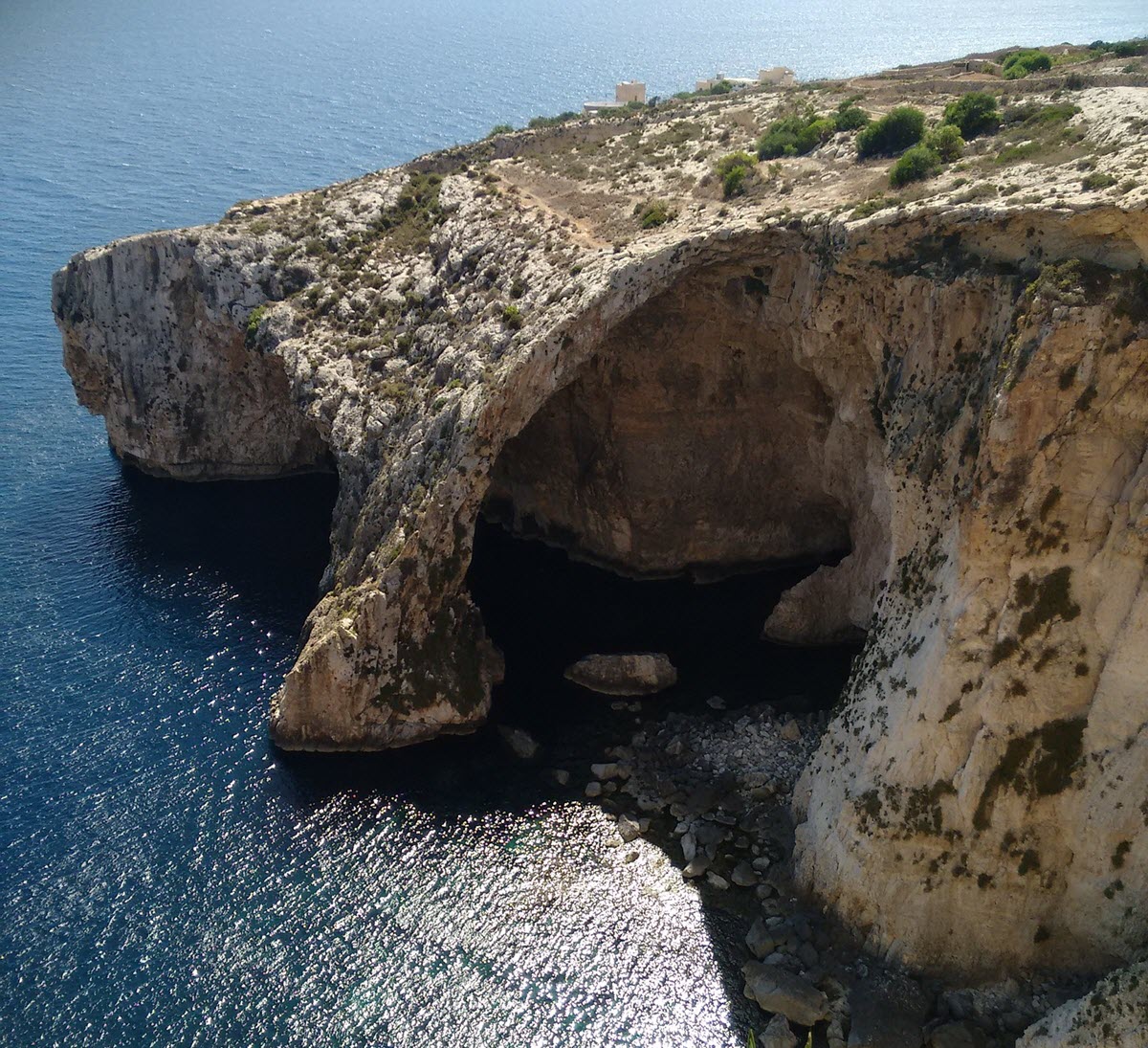Filfa is a small uninhabited island in the southern part of the Maltese Archipelago. It forms a part of the Republic of Malta, and is located roughly 4.5 kilometres south of the island of Malta.
The island Filfla is a mostly barren, crumbling limestone plateau surrounded by 60-metre high cliffs. It is difficult for plants to survive here, but a wild leek is present which can become up to two metres tall.
Three species of seabirds use the island as their breeding ground: the European storm petrel (an estimated 5000 – 8000 pairs), Cory’s shearwater (circa 200 pairs) and yellow-legged gull (circa 130 pairs). The island has been identified as an Important Bird Area (IBA) by BirdLife International, chiefly due to the storm petrels.
Filfa has two known endemic animal subspecies:
- The wall lizard Podarcis filfolensis filfolensis
- The door snail Lampedusa imitratrix gattoi
Slightly more than 100 metres south-west of Fifla we find an even smaller piece of land: Filflu. More accurately described as a rocky islet than an island, this is the southernmost land part of the Republic of Malta.

Short facts bout Filfa
Coordinates: 35°47′15″N 14°24′37″E
Size: 3.7282 hectares
Coastline: 988 metres long
Highest elevation: 60 metres
Population: none
Visiting Filfla
Visitors to Filfla must first obtain permission from Malta´s Environment and Resources Authority.
The legend of Filfla
The origin legend for Filfla is linked to the origin legend for Il-Maqluba, a 4,765 square metre sinkhole in the village Qrendi on the island Malta.
According to this legend, the people who once lived where the sinkhole now is lead horrible, dissolute lives. A godfearing neighbour warned them and urged them to repent, but to no avail. Eventually, God punished them by engulfing the hamlet, saving only the neighbour. Angels then threw a fragment of the hamlet into the sea, and this became the isle of Filfla.
Timeline of Filfla
- Some scholars have speculated that Filfla might have been regarded as a sacred island by the neolithic inhabitants of the island of Malta. The temples of Ħaġar Qim and Mnajdra on Malta´s coast were erected facing Filfla.
- A chapel was built inside a cave on Filfla in 1343. The chapel was destroyed in an earthquake in 1856, the same earthquake that sank part of the island.
- A map of Malta dating back to 1789 shows a few permanent structures on the island: a fort, a lighthouse, and a monastery with a chapel.
- The Royal Navy and Royal Air Force used the island for target practice until 1971. Spent cartridges are still found in Filfla now and then.
- Filfla was declared a bird reserve in 1980. The Filfla Natural Reserve Act, which was enacted in 1988, provided even stronger protection for the island and its surroundings – including restrictions regarding access and a ban against fishing closer to the island than one nautical mile (1.9 km). The fishing ban was not solely due to preservation concerns; there was also the risk of encountering unexploded ordnance near the island. In 1990, the government removed the fishing ban (see Maltese Government notice 173 of 1990).
- Filfla can be seen in Popey, a 1980 musical comedy film produced by Paramount Pictures and Walt Disney Productions. When shooting the movie, Filfla served as Scab Island, a desolate island in the middle of the ocean.
- In 1985, the International Court of Justice made an official decision regarding a territorial dispute between Malta and Libya concerning the continental shelf. Essentially, the court elected to ignore Filfla from the calculations.
